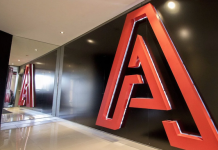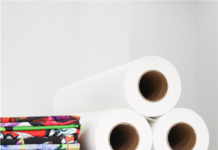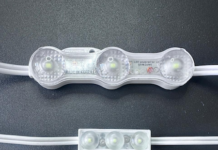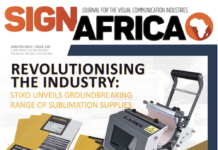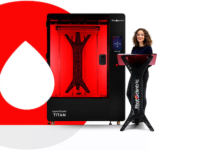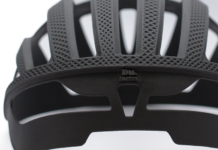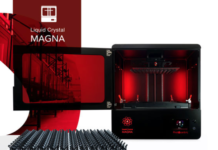LED channel letters finished with EZ Ultra Lumens epoxy resin do not require traditional Perspex or acrylic facings and make for an unusual, impactful, neat and striking result. The domed, borderless effect achieved with this material never fails to impress and the end product is durable and looks neat, professional and attractive 24 hours a day, whether it’s light or dark. This article appears in the Sign Africa Journal.
Due to the scarcity of skills associated with manufacturing resin LED channel letters, signage companies that can do this work are in a position to charge a lot more for this type of signage. This is certainly the trend with resin signage manufacturing abroad and the South African market is likely to follow suit.
RESIN PROCESS
EZ Ultra Lumens Resin consists of a base liquid, an activator that starts the curing process, diffuser agent to evenly distribute the LED light and colour pigment. Mixing resin can be likened to the painting process, with different colours added to achieve a specific shade. Colours are available in standard and Pantone-matched variants. Often there is a compromise that needs to take place between the Pantone colours, where the desired colour is achieved either when the lights are on or off. The use of colour LED’s is advantageous to achieve specific colour finishes.
The inside of these letters is spray painted bright white to maximise the reflection of LED lights. Once the paint has dried, the LED’s are fixed to the inside of the letter shell. An ‘S’ or ‘Flex’ ribbon LED allows users to get around corners easier. The lights are then connected to terminals and in turn the Power Supply Unit.
A 1mm to 2mm clear Perspex lid is then positioned inside the ‘letter shell’, leaving a 6-8mm recess from the top of the letter. Once the Perspex is in place, this is sealed with specialised glue to ensure it is water-tight so when the liquid resin is poured over it, it does not leak. The prepared liquid resin mix is then poured into stainless steel or aluminium ‘letter shells’, which have been micro welded or joined together and then polished or painted to customer requirements. The resin is poured on top of the Perspex lid and will create a raised surface.
Resin variants include flat-face or domed-face and matte or gloss. EZ Ultra Lumens Resin is available in ‘4 hour’ and ’12 hour’ curing variations. Environmental conditions inside a workshop play a big part in the curing process.
APPLICATIONS
Resin letters are ideal for retail and end-consumer environments, which require attention to detail and unique branding to differentiate offerings. Returns can be given a mirrored or brushed steel alternative finish. You can also use different techniques to achieve unique lighting effects for movement and brightness. Basically, what can be achieved is limited to your imagination.
EQUIPMENT REQUIRED
Your working environment is important as the temperature needs to be ideal for mixing and curing. You need an experienced partner to take you through the correct equipment. It takes commitment to invest in a proper set up – there are no shortcuts if you want the best results.
As a large amount of preparation needs to take place, accuracy and precision are key. You need to keep records of all materials used, including colours and the type of LED used. If this is done properly, it will result in quick turnover of letters, if for example, a client needs a letter replaced.
You will also need:
• A CNC controlled return bender, which will allow consistency throughout the letter-making process. It must be able to handle stainless steel bending. Alternatively, you could use a bureau that offers this service. Hand-made projects are not recommended.
• A micro laser welder to join stainless steel and minimise post-finish polishing.
• Perspex cutting technology such as a CO2 laser.
• You may need fibre or plasma cutting to handle stainless steel if you don’t have access to bureau cutting services.
• Mixing containers and accurate measuring and weighing equipment.
• Polishing equipment for the stainless steel.
TRAINING REQUIRED
LED Resin letters are an art form, so there is a large amount of learning involved. We offer different levels of training, from beginning to advanced. Our advice is to begin with a small investment for a starter kit and grow from there. Bear in mind that once the curing process begins, you will have to use all the materials that have been combined with the activator agent.
Resin sign manufacture requires precision and attention to detail. There is an exact formula or recipe that needs to be followed for optimal results. However, the right product and formula is not necessarily a guarantee of success. A certain amount of talent, skill, attention to detail, creativity and practice needs to be combined to make a good resin artisan.
LIFE SPAN
Resin is primarily an indoor product as lengthy exposure to direct sunlight will cause ‘yellowing’ of the sign. When used indoors, colours won’t fade for at least two years, and this is a gradual fading, so is not noticeable. Standard economy type LED’s can last for 10,000 hours.
3D LED resin letters allow users to target a high end market with a premium offering. Companies that take advantage of this will be the first among African companies to offer this finishing technique. The margins are high and serious players that want to be part of this new market will gain an unbelievable competitive edge.
NSI-4-Africa 0824674694 Shawn Bezuidenhout www.nsi4africa.com



